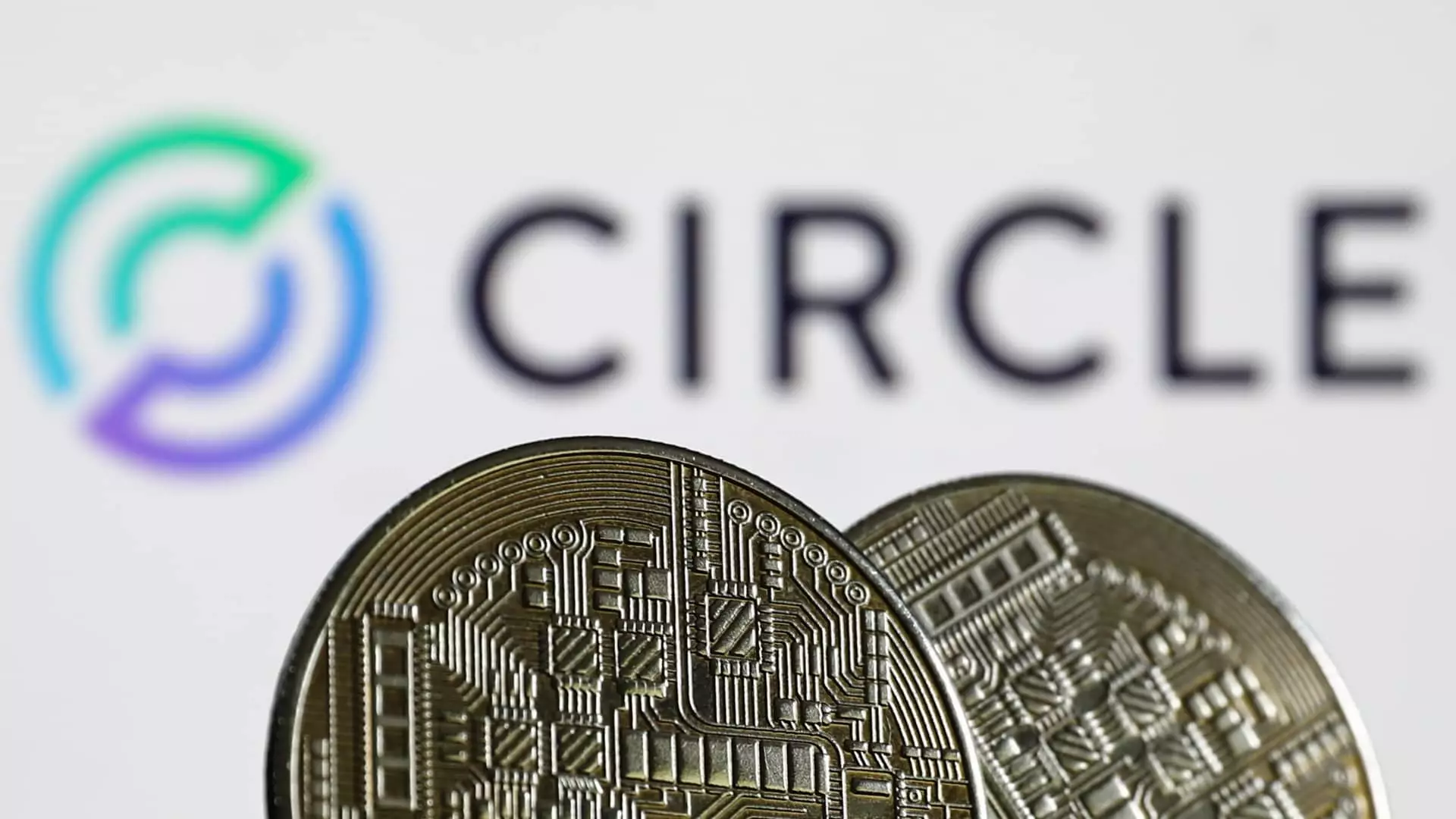Circle, the prominent player behind the widely embraced USDC stablecoin, has set the stage for its initial public offering (IPO) with ambitious plans to raise approximately $624 million. This endeavor marks a watershed moment in the cryptocurrency landscape, as the company, under the leadership of CEO Jeremy Allaire, seeks to attain a valuation hovering around $6 billion. In what could be a pivotal shift for both Circle and the existing financial paradigm, investors should closely watch how this IPO unfolds.
What is striking about Circle’s plan is not merely the financial metrics involved, ranging from the sale of 24 million shares to an expected pricing structure of $24 to $26, but the broader implications it represents. If successfully executed, Circle’s valuation—estimated at around $6.7 billion when accounting for outstanding stock options—could significantly elevate the stature of stablecoins, particularly amidst the ongoing regulatory shifts in the United States as lawmakers inch toward formalizing crypto regulation.
A New Paradigm for Investment Dynamics
The enthusiastic interest of significant investment firms like Cathie Wood’s ARK Investment Management, which may invest up to $150 million, further underscores the potential traction of this IPO. Sharing this prospect with existing shareholders as part of their sales strategy implies confidence in the long-term viability and growth of USDC. Beyond just financial returns, Circle’s IPO could redefine the association between technology and finance, establishing a new standard that would likely influence other crypto firms contemplating public offerings.
Interestingly, Circle’s performance and trajectory are already showing signs of resilience. As of now, USDC commands roughly $62 billion in circulation, constituting about 27% of the total stablecoin market cap. This is a commendable feat, especially considering Tether’s long-standing dominance at 67%. The comparative growth rates speak volumes; USDC has exploded with a 40% increase this year versus Tether’s modest 10%. Such numbers reveal a burgeoning confidence that should not be overlooked.
Regulatory Winds Shifting in Favor of Stablecoins
As the stablecoin sector witnesses an infusion of interest spurred by proposed U.S. legislation, it comes as no surprise that Circle finds itself perfectly positioned within this regulatory context. The recent Senate advancements toward enacting a regulatory framework for stablecoins could provide a unique foundation for institutional adoption. With former President Trump expressing a desire for swift regulatory action, this nexus of politics and tech can hardly be overstated.
What’s crucial here is the ability of stablecoins like USDC to transcend traditional boundaries. Their utility in quick and cost-effective dollar transfers across borders makes them highly attractive to banks and fintech firms alike. Moreover, USDC’s role in preserving U.S. dollar dominance raises questions about the fundamental structure of global finance. As countries explore the implications of adopting stablecoins, the discussion should shift from skepticism to strategic foresight.
The Complicated Relationship with Major Industry Players
Circle’s relationship with Coinbase is another layer to consider in the unfolding narrative. As a co-founder of USDC, Coinbase enjoys a 50% revenue-sharing arrangement with Circle, which encapsulates the intertwined nature of these two entities. Coinbase’s CEO, Brian Armstrong, has publicly acknowledged a “stretch goal” to make USDC the most dominant stablecoin globally, and the stakes have never been higher.
This ambition could significantly impact Coinbase’s revenue streams and possibly dictate its market position amid the growing competition. Historically, stablecoins have served primarily trading roles in decentralized finance (DeFi), but their strategic application is shifting toward broader financial utilities. This raises both questions and opportunities for investors as they sift through the implications for liquidity, demand, and market activity.
In light of all this, the future landscape of stablecoins might not just be about preserving the status quo; it may redefine the ongoing dialogue surrounding dollar dominance both domestically and globally. Analysts must closely scrutinize how Circle’s IPO influences not only USDC’s position but also the broader cryptocurrency market as it navigates the inevitable complexities of governmental oversight and consumer acceptance.

